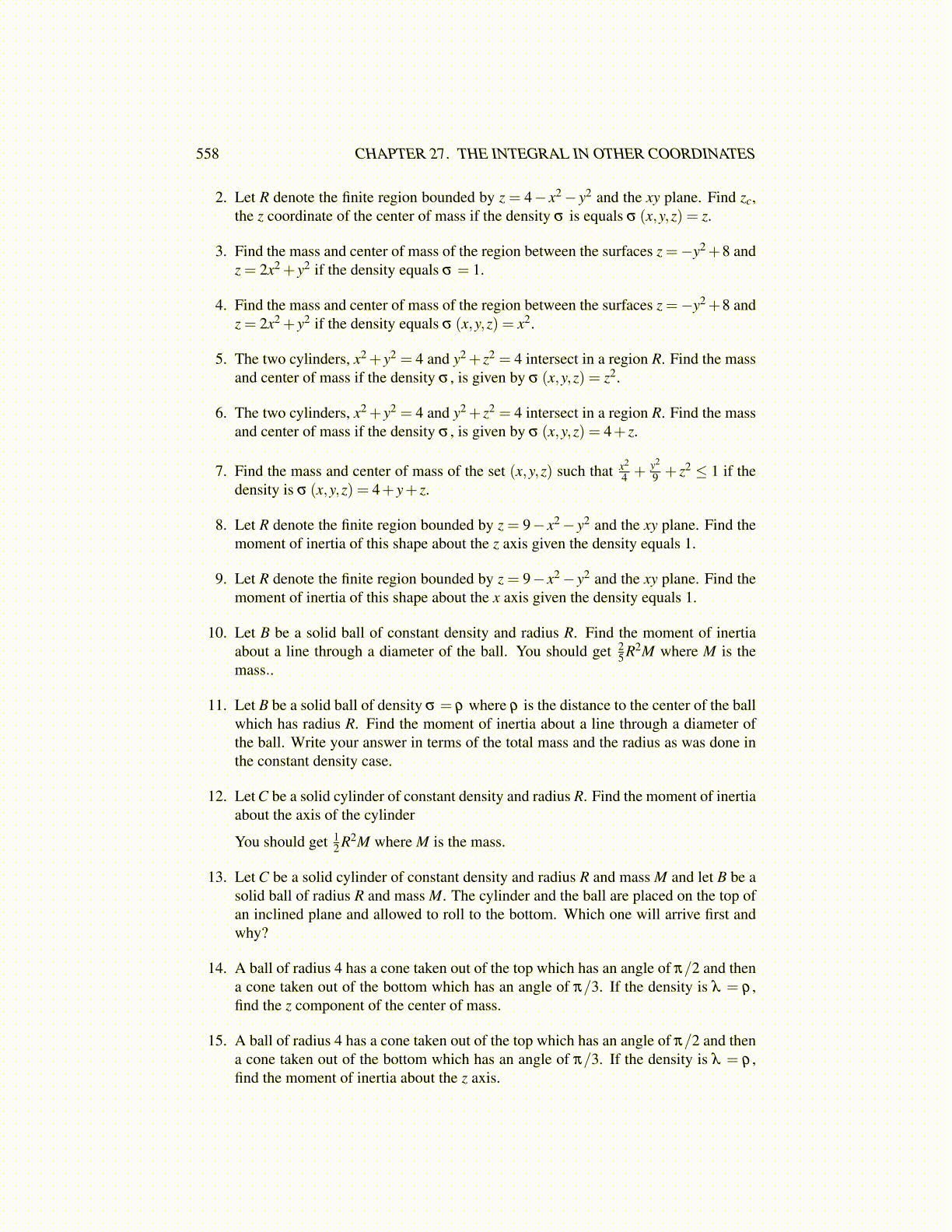
558 CHAPTER 28. THE INTEGRAL ON SURFACES
dV
u0
du2
du1
fu2(u0)du2
fu1(u0)du1
f(dV )
From Definition 28.1.1, the two dimensional volume of this infinitesimal parallelepipedlocated at f (u0) is given by∣∣∣∣∂f (u0)
∂u1du1 ×
∂f (u0)
∂u2du2
∣∣∣∣ =
∣∣∣∣∂f (u0)
∂u1× ∂f (u0)
∂u2
∣∣∣∣du1du2 (28.1)
=∣∣fu1
×fu2
∣∣du1du2 (28.2)
It might help to think of a lizard. The infinitesimal parallelepiped is like a very smallscale on a lizard. This is the essence of the idea. To define the area of the lizard sum upareas of individual scales1. If the scales are small enough, their sum would serve as a goodapproximation to the area of the lizard.
This motivates the following fundamental procedure which I hope is extremely familiarfrom the earlier material.
Procedure 28.1.2 Suppose U is a subset of R2 and suppose f : U → f (U) ⊆ R3
is a one to one and C1 function. Then if h : f (U)→ R, define the 2 dimensional surfaceintegral
∫f(U) h(x) dA according to the following formula.∫
f(U)h(x) dA ≡
∫U
h(f (u))∣∣fu1
(u)×fu2(u)∣∣du1du2
=∫
Uh(f (u))det(G(u))1/2 du1du2
where G(u) =
(fu1
·fu1fu1
·fu2fu1
·fu2fu2
·fu2
).
1This beautiful lizard is a Sceloporus magister. It was photographed by C. Riley Nelson who is in the Zoologydepartment at Brigham Young University © 2004 in Kane Co. Utah. The lizard is a little less than one foot inlength.